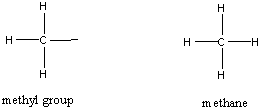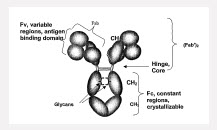Definitions:
Oxidation refers to where electrons are transferred from one atom to another. The molecule that gives up electrons is said to be Oxidized and is also called a reductant because it is reducing another molecule.
Reduction refers to where electrons are added. A molecule that accepts electrons is said to be an oxidant.
Nucleophile typically shares an electron pair with an electrophile in the process of bond formulation. In other words, a nucleophile is seeking a center of electron deficiency with which to react. Nucleophiles (“nucleus loving”) can be negatively charged or uncharged, and include for example heteroatoms other than carbon bearing a lone pair, or pi electrons in any alkene or alkyne.
Electrophiles (“electron-loving”) are electrically neutral or positively charged and have some place for the electrons to go, but it an empty orbital (as in BH3) or a potentially empty orbital.
Example: A common characteristic of a nucleophilic reaction that takes place on saturated carbon, is that the carbon atom is almost always bonded to a heteroatom, defined as an atom other than carbon or hydrogen. The heteroatom is usually more electronegative than carbon and is called the “leaving group” (L) in the substitution reaction. The leaving group departs with the electron pair by which it was originally bound to the carbon atom. The reactivity of a reactive group is largely determined by the tendency of a leaving group to depart. Another factor on reactivity of a reactive group is the strenght of the bond between the leaving group and the carbon atom, since this bond must break if substitution is to occur.The ease with which a leaving group departs is related to the basicity of that group.
Weak bases are in general good leaving groups because they are able to accommodate the electron pair effectively. Good leaving groups are in general the conjugate bases of strong acids with pKa values below 5 such as I-, Br-, Bl-. In general, a good leaving group is electronegative to polarize the carbon atom, it is stable with an extra pair of electrons once it has left, and is polarizable, to stabilize the transition state. With the exception of iodine, all the haolgens are more electronegative than carbon. A carbon-haologen (C-X) bond in an alkyl halide, for example, is polarized, with a partial positive charge on the carbon and a partial negative charge on the halogen. Thus the carbon atom is susceptible to attack by a nucleophile (a reagent that brings a pair of electrons) and the halogen leaves as the halide ion (X-), taking on the two electrons form the C-X bond.
Acids: as defined by the Bronsted/Lowry theroy of acid and bases are substances that donate hydrogen ions (H+).
Bases: are substances that accept hydrogen ions.
Conjugate pairs: Examples of conjugate pairs include carboxylic acids which contain the carboxyl group -COOH. R-COOH is the conjugate acid and R-COO- is the conjugate base. A typical reaction would be R-COOH + H2O to yield R-COO- + H2O + H+.
pH lowering: The hydrogen ions which are released into the medium in the above reaction lowers the pH.
raising the pH: The removal of hydrogen ions or the addition of hydroxide ions (OH-) to water aises the pH.
Types of Bonds
(1) Hydrocarbons: C and H form covalent bonds. These hydrocarbons are nonpolar, do not form hydrogen bonds and are usually insoluble in water.

(2) C- O bonds: play essential roles in carbohydrate metabolism and are also important in pharmaceutical products. For example, pharmaceutically desirable morphinan compounds which are extensively used for pain relief often have a ketone group (a keytone comprises “a carbonyl group” any oxygen atom double-bonded to a C atom where the C atom of the carbonyl group is single bonded to two carbon atoms.

(3) C-N bonds (These also occur in nucleic acids)

(4) Phosphates

(5) Disulfide bond: The formation of disulfide bonds from thiols of a protein is a two electron oxidation reaction requiring the presence of an appropriate electron acceptor (oxidant). Protein thiol oxidation to the disulfide is carried out by low molecular weight disulfide reagents, such as oxidized glutathione or cystamine. The cytoplasm of both eukaryotes and prokaryotes is highly reducing in nature, so the equilibrium constants for thiol disulfide exchange processes are unfavorable for the formation of disulfide bonds. In eukarytoes, the formation of disulfide bonds is more favorable in the secretory pathway because ER is significanlty oxidizing due to the lwo ration of GSH/GSSG, and PDI residues in the luen of the ER. In a gram negative bacteriu, the disulfide bond formation occurs in the periplasm with the help of DsbA. Thiol-disulfide exchange occurs via direct nucleophilic attack of the thiolate anion (S-_ on one of the sulfurs of the oxidant, forming a transient intermediate. As a result of nucleophilic substitution a sulfur atom is removed and a mixed disulfide intermediate is formed. The formation of a disulfide bond is favored (a) at pH of a 8-9 to favor the formation of the thiolate anions (S-_ and (b) when the two Cys-residues are close to each other.
(6) Covalent Bonds form when 2 atoms come very close together and share one or more of their electrons. In a single bond, one electron from each of the 2 atoms is shared (an example is H2 or H-H or hydrogen gas); in a double bond a total of four electrons are shared (example O2 or oxygen gass). Each atom forms a fixed number of covalent bonds in a defined spatial arrangement. C, for example, forms 4 single bonds arranged tetrahedrally.
Often electrons are shared unequally which results in a polar covalent bond. For example, the covalent bond between O and H, or N and H, is polar whereas that between C and H has electrons attracted much more equally by both atoms and is relatively nonpolar.
Noncovalent Attractions or Bonds
(1) Hydrogen Bonds: A hydrogen bond forms when a H atom is sandwiched between 2 electron attracting atoms (usually O or N). Hydrogen bonds are very important with respect to water. 2 atoms, connected by a covalent bond, may exert different attractions for the electrons of the bond. In such cases the bond is called “polar” with one end slightly negatively charged and the other end positively charged. This is exactly what happens with water. Although a water molecule has an overall neutral charge (the same # electrons and protons), the oxygen nucleus draws electrons away from the hydrogen nuclei, leaving the H nuclei with a small net positive charge. The small negative charge on the O atom can in turn hydrogen bond with a H atom on a neighboring water molecule.
 Molecules that contain nonpolar bonds (CH bonds) are usually insoluble in water and are called “hydrophobic.” Substances which are polar can dissolve readily in water and are termed “hydrophilic.” Hydrogen bonding is also used between nucleotide bases and is common between amino acids in polypeptide chains.
Molecules that contain nonpolar bonds (CH bonds) are usually insoluble in water and are called “hydrophobic.” Substances which are polar can dissolve readily in water and are termed “hydrophilic.” Hydrogen bonding is also used between nucleotide bases and is common between amino acids in polypeptide chains.
Hydrogen bonding is also very important with respect to stabilizing proteins. Such hydrogen bonds can form (1) between atoms of 2 peptide bonds, (2) between atoms of a peptide bond and an amino acid side chain and (3) between 2 amino acid side chains.
(2) Van der Waals attractions: The electron clud around any nonpolar atom will fluctuate producing a flickering dipole. Such dipoles will transiently induce and oppositely polarized flickering dipole in a nearby atom. The 2 atoms will be attracted to each other in this way until the distance between their nuclei is about equal to the sum of their van der Waals radii. Although weak, these forces can become important when 2 macromolcecular sufaces fit very close together, because many atoms are involved.
(3) Ionic Bonds: occur when electrons are donated by one atom to another in contrast to covalent bonds which involve the sharing of electrons. Ionic bonds are more likely to be formed by atoms that have just 1 or 2 electrons in addition to a filled outer shell or are just one or 2 electrons short of acquiring a filled outer shell. They can often attain a completely filled outer electron shell more easily by transferring electrons to or from another atom than by sharing electrons. For example, Na, with atomic # 11, can strip itself down to a filled shell by giving up the single electron external to its second shell. By contrast, a Cl atom, with atomic number 17, can complete its outer shell by gaining just one electron. When an electron jumps from Na to cl, both atoms become electrically charged ions (Na+, Cl-). Because of their opposite charges they are attracted to each other and held together in an ionic bond.
When a sodium atom donates an electron to a chlorine atom, the soidum atom is oxidized and the chlorine atom is reduced.
(4) Hydrophobic Force: This force is caused by a pushing of nonpolar surfaces out of the hydrogen bounded water network. The force is rather nonspecific but central to the proper folding of protein molecules.






 Molecules that contain nonpolar bonds (CH bonds) are usually insoluble in water and are called “hydrophobic.” Substances which are polar can dissolve readily in water and are termed “hydrophilic.” Hydrogen bonding is also used between nucleotide bases and is common between amino acids in polypeptide chains.
Molecules that contain nonpolar bonds (CH bonds) are usually insoluble in water and are called “hydrophobic.” Substances which are polar can dissolve readily in water and are termed “hydrophilic.” Hydrogen bonding is also used between nucleotide bases and is common between amino acids in polypeptide chains.


 from WO 2007/024743 A2
from WO 2007/024743 A2 from US 14/352,411
from US 14/352,411